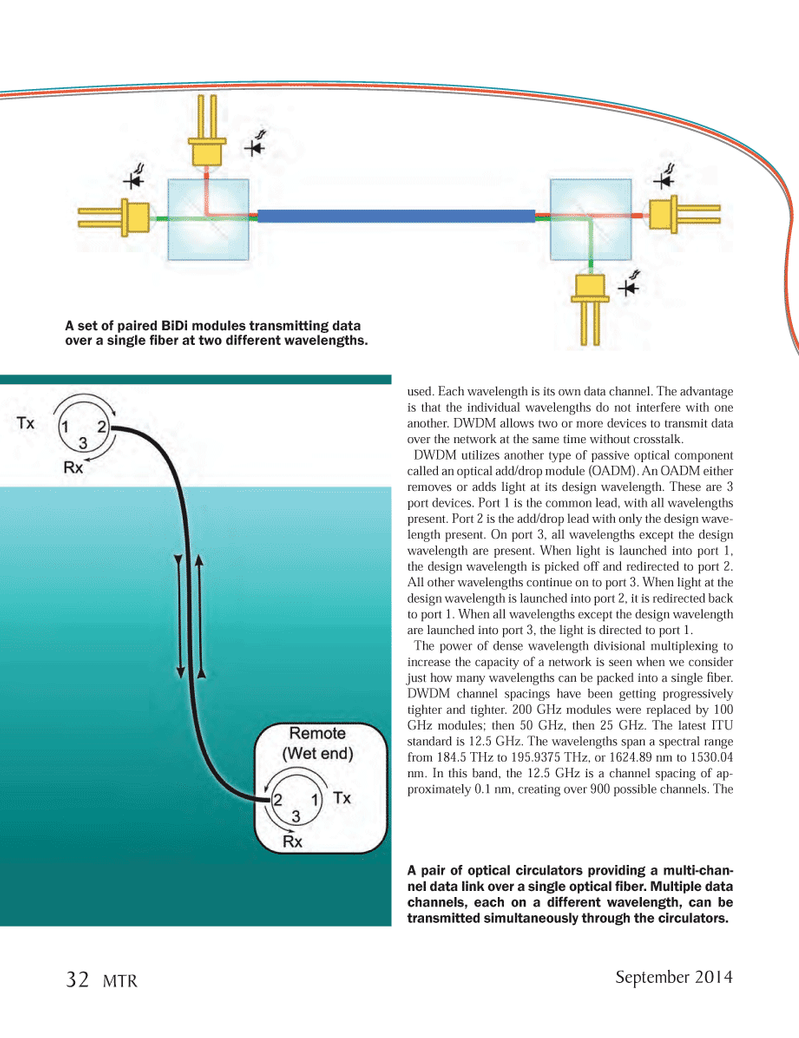
Page 32: of Marine Technology Magazine (September 2014)
Ocean Observation: Gliders, Buoys & Sub-Surface Networks
Read this page in Pdf, Flash or Html5 edition of September 2014 Marine Technology Magazine
used. Each wavelength is its own data channel. The advantage is that the individual wavelengths do not interfere with one another. DWDM allows two or more devices to transmit data over the network at the same time without crosstalk.
DWDM utilizes another type of passive optical component called an optical add/drop module (OADM). An OADM either removes or adds light at its design wavelength. These are 3 port devices. Port 1 is the common lead, with all wavelengths present. Port 2 is the add/drop lead with only the design wave- length present. On port 3, all wavelengths except the design wavelength are present. When light is launched into port 1, the design wavelength is picked off and redirected to port 2.
All other wavelengths continue on to port 3. When light at the design wavelength is launched into port 2, it is redirected back to port 1. When all wavelengths except the design wavelength are launched into port 3, the light is directed to port 1.
The power of dense wavelength divisional multiplexing to increase the capacity of a network is seen when we consider just how many wavelengths can be packed into a single fi ber.
DWDM channel spacings have been getting progressively tighter and tighter. 200 GHz modules were replaced by 100
GHz modules; then 50 GHz, then 25 GHz. The latest ITU standard is 12.5 GHz. The wavelengths span a spectral range from 184.5 THz to 195.9375 THz, or 1624.89 nm to 1530.04 nm. In this band, the 12.5 GHz is a channel spacing of ap- proximately 0.1 nm, creating over 900 possible channels. The
A pair of optical circulators providing a multi-chan- nel data link over a single optical fi ber. Multiple data channels, each on a different wavelength, can be transmitted simultaneously through the circulators.
A set of paired BiDi modules transmitting data over a single fi ber at two different wavelengths. 32 MTR
September 2014
MTR #7 (18-33).indd 32 8/26/2014 11:42:42 AM

 31
31

 33
33
